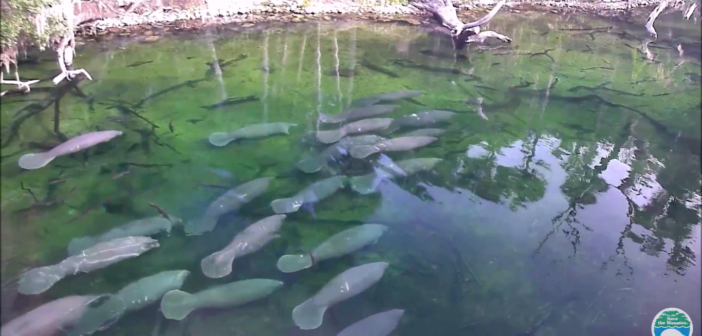The Save the Manatees organization just posted a new video of a herd of the big friendly mammals gathering in Blue Spring State Park in Florida for mating season. You can see it via the link here: https://www.facebook.com/watch/?v=964779371542876
Save the Manatees said they counted more than 30 manatees last week at Blue Spring, about halfway between Orlando and Daytona Beach, for the cool water and their annual mating ritual.
During mating season, a female manatee is generally pursued by as many as half a dozen males and the female (cow) will mate with several males (bulls) to provide the largest chance that a calf will result. A female will remain in heat for about three weeks. Manatees mate solely for reproduction; there are no attachments.
A cow is ready to mate when she’s about 5 years old; a bull about 9 nine years old. Gestation is 13 months, and generally only one calf is born. Females mate only every other year because of the long gestation period.
An adult manatee can live as long at 65 years and will grow to be ten feet long and weigh 1,000 pounds. A new calf will be about six feet long and weigh 70 pounds.
Save the Manatees has this advice for boaters who are near a manatee during the mating season:
“Do not approach or touch any of the manatees.
“Watch only from a respectful distance.
“Know that interfering with the mating herd is considered manatee harassment and is against the law.
“If you witness others touching or otherwise disturbing the mating herd, please call the Florida Fish and Wildlife Conservation Commission Wildlife Alert Hotline at 888-FWCC (3922) or your local wildlife agency or stranding network.”
Patrick Rose, an aquatic biologist and executive director of the Save the Manatee Club, said, “The presence of the manatee mating herd only underscores the critical need for protected areas like Blue Spring State Park, which provides necessary space for manatees to rest and engage in natural behaviors, such as mating, without human interference. Outside of these sanctuaries, it is imperative that members of the public understand that it is important to observe manatees only from a respectful distance.” Read more:




